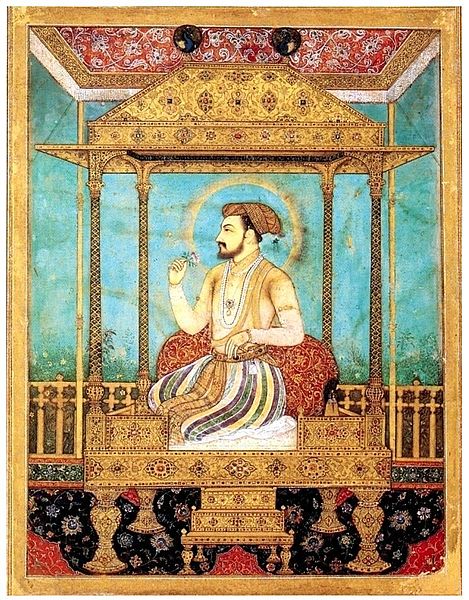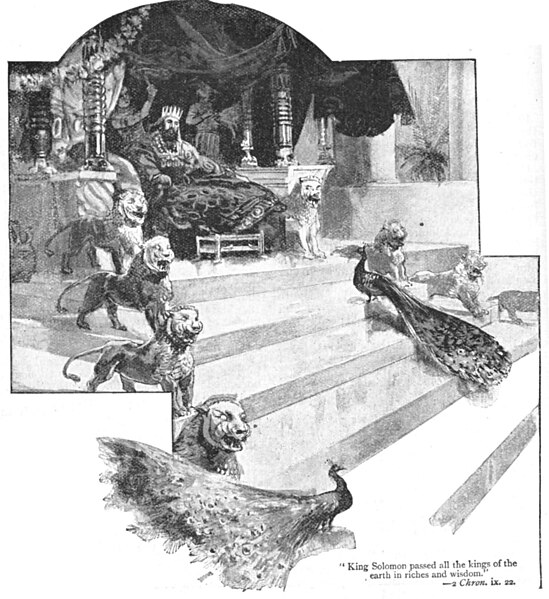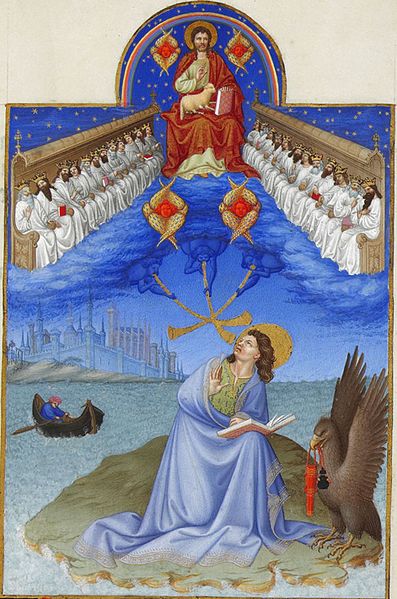The Peacock Throne was a famous jewelled throne that was the seat of the emperors of the Mughal Empire in India. It was commissioned in the early 17th century by Emperor Shah Jahan and was located in the Diwan-i-Khas in the Red Fort of Delhi. It was named after a peacock as two peacocks are shown dancing at its rear.
Shah Jahan seated on a minor throne, which probably shared some stylistic elements with the Peacock Throne
The Persian king Nader Shah seated upon the Peacock Throne with members of the court, after his victory at the Battle of Karnal
Portrait of Jean-Baptiste Tavernier, as a traveller wearing Mughal dress, from his Les Six Voyages, published in 1679
Shah Alam II seated on the throne, next to him the crown prince. Although the original Peacock Throne was lost by the time of this painting, it depicts what was either a replacement throne modelled on the original one or painted from memories and descriptions (circa 1800)
A throne is the seat of state of a potentate or dignitary, especially the seat occupied by a sovereign on state occasions; or the seat occupied by a pope or bishop on ceremonial occasions. "Throne" in an abstract sense can also refer to the monarchy itself, an instance of metonymy, and is also used in many expressions such as "the power behind the throne".
Fanciful depiction of Solomon on his throne
Stone relief depicting Xerxes the Great seated on a throne
Vision of John of Patmos from the Book of Revelation (4:4)—four seraphim surround the throne of Christ, twenty-four elders sit on thrones to either side (Très Riches Heures du Duc de Berry)
Throne of the ecumenical patriarch of Constantinople in the Phanar, Istanbul. On the dais the Gospel is enthroned on a curule chair, in front of it, lower down is the patriarch's throne.








